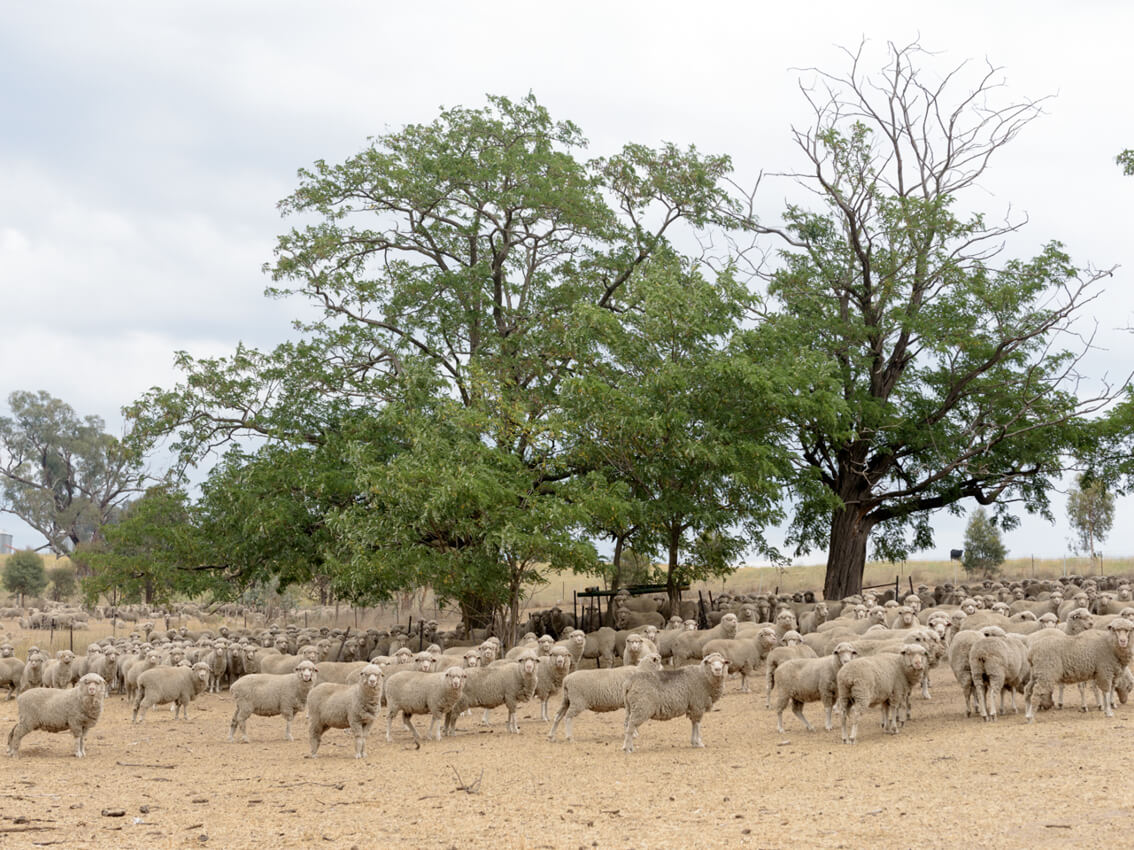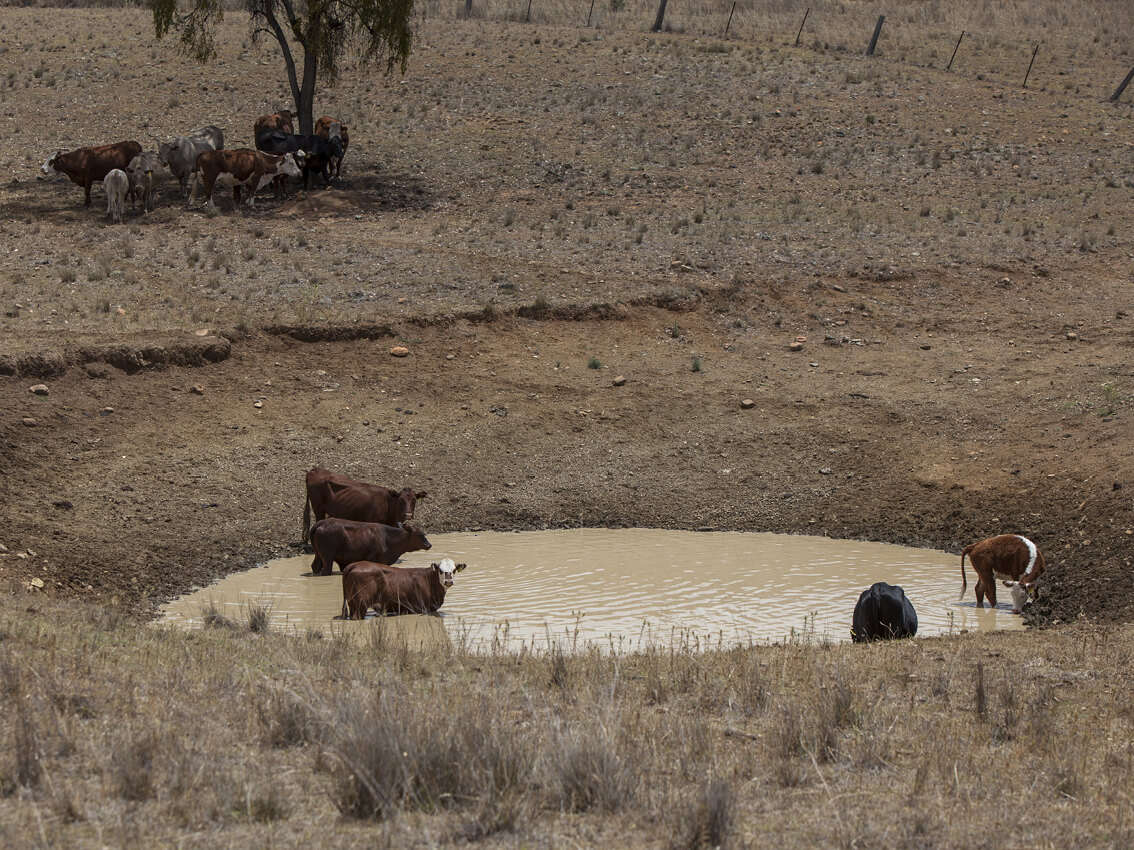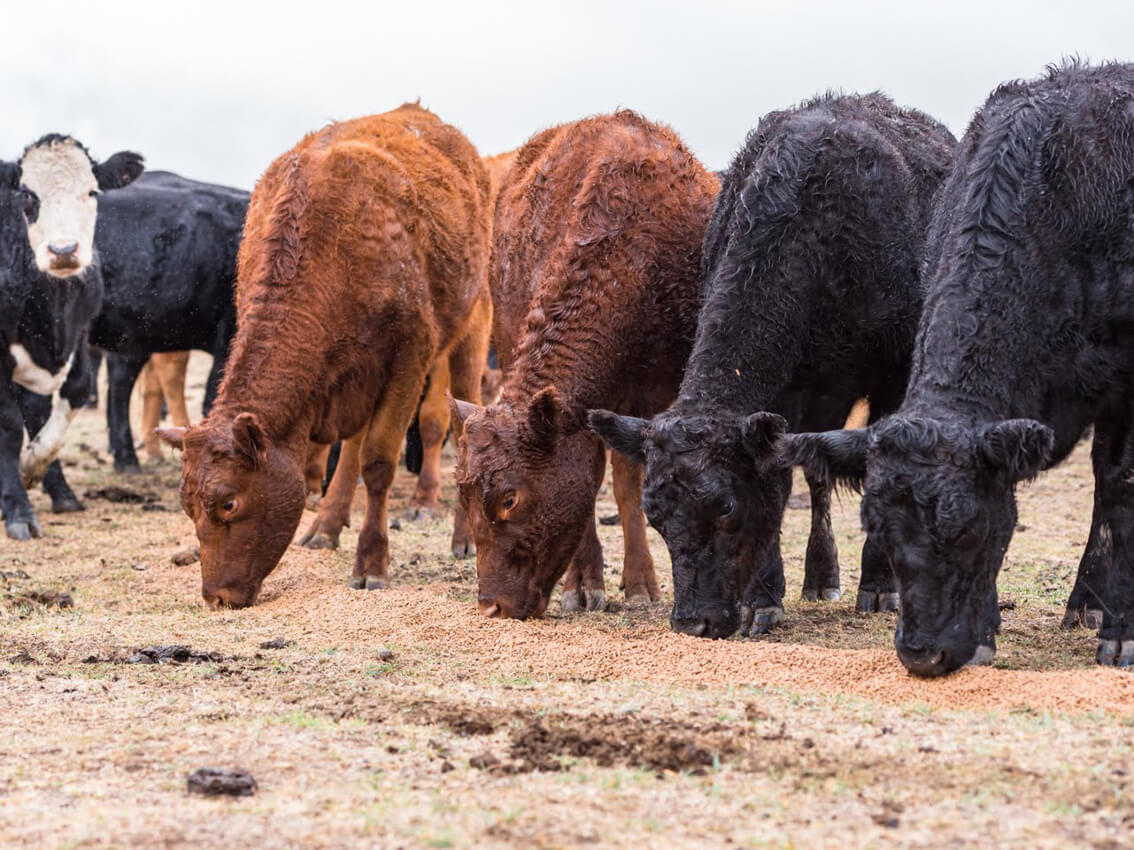On-farm drought management
Everyone’s situation is unique and producers need to make drought management decisions tailored to their situation and production system.
It is important to gather all the information you can, assessing your property, livestock and water; considering feed and management options; consulting family, workers, agents or advisors; and then forming a drought management strategy and decision making process to actively manage your property through drought.
Managing your farm through drought is a valuable way to understand your property's constraints and opportunities to better prepare for ongoing climate challenges.
Drought management strategies
Local Land Services can assist with advice and access to the tools farmers need to plan and manage drought.
To prepare for drought, we recommend you:
- Assess your pasture
- Check your soil moisture profile
- Assess livestock condition
- Assess your stock water status
- Consider supplementary feed options
- Plan and prioritise a livestock selling order
- Know your financial position
- Prepare stock containment areas
- Monitor animal health
- Look after your own wellbeing.
Assess your pasture
As your drought risk increases, inspect all of your paddocks to determine how much feed you have and assess pasture quality.
An essential part of your farm's drought management plan should include developing a feed budget.
Consider:
- If it stays dry for the next month, two months, three months, what will the quality and quantity be like?
- How much feed do you need for the stock you are carrying?
- What stage are your crops at?
- Will they finish or can they be grazed?
What is the groundcover percentage – are there bare patches showing? Groundcover is easily assessed and is a useful drought management tool. High levels of groundcover ensure rainfall that falls is slowed down and better captured, with more rain infiltrating the soil profile. If there are reasonable levels of leaf cover remaining, the pasture will recover much faster when rain does fall.

Check your soil moisture profile
There are a range of tools to monitor your soil moisture profile. While you are checking pastures, dig a few holes and assess soil moisture levels. Is there still moisture in the root zone? Match what you find here to the weather forecasts and feed requirements in the months ahead should drought conditions continue.
- The Farm Tracker App is a simple tool to help you monitor seasonal conditions on your property.
- The Combined Drought Indicator Map will help you understand the emergence of drought in your area, and give you time to put plans in place.
- The State Seasonal Update is produced by NSW DPI to give an overview of seasonal conditions.
Assess livestock condition
Check the condition score of your livestock. If you have lactating animals, consider early weaning to reduce the energy demand on breeding stock. Young heifers, ewes and breeders should be watched closely in drought conditions as they are prone to stripping condition which can result in poor re-joining rates.
Heifers with their first calf should not fall below Fat score 2 (minimum 3mm fat at P8 site). Calves, 2-5 months-old, will wean satisfactorily provided they are supplied with a high quality supplementary diet. It is more efficient to wean calves early and feed them separately than trying to supplement the lactating cow/calf unit. This also applies for sheep and other classes of livestock.
Assess your stock water status
Managing your on-farm water sources is an essential part of your drought management strategy.
How much water do you have stored on farm? How many litres a day will your stock drink? What is the quality of your stored water? Could stock accessing water get stuck in mud? Can you improve water access and availability overall should it remain dry?
Calculate your daily water requirements, and utilise feed in paddocks with poor water supplies first. Read our guide to stock water requirements in drought for more advice.

Consider supplementary feed options
Do a stocktake on your supplementary feed. How much do you have? What is its quality? Will it maintain stock and, if so, how many? Can it fatten and finish stock? Read our drought feeding livestock guide for advice on the minimum weight of feed per day to maintain condition.
Energy should be the main focus of supplementary feeding. Then give consideration to protein, fibre and the vitamin/ mineral components. Do your sums as feed and transport costs vary widely. For example, cereal grain (energy source) prices delivered on-farm may vary by over $50 per tonne and then complete mixes from local feed mills while simpler to feed, can attract further premiums. Remember, grain quality can vary and grain prices can rise quickly if supply tightens during extended drought periods.
Hay and silage can be sourced from less drought-affected areas which may continue to have an adequate supply of pasture, and conditions will normally dictate the price. The main word of caution is to seek out a feed quality test to determine value for money. Do not forget to obtain a commodity vendor declaration with any stock feed purchased, and when purchasing feed in bulk, give consideration to available resources to unload &/or store.
Our guide to balancing nutrition and cost can help with advice on the best feed options during drought.
Plan and prioritise a livestock selling order
Livestock should be sold or agisted before they are suffering from poor nutrition. Offload unproductive stock (for example, cows that have pregnancy tested not in calf, or ewes that have scanned empty). Preserve core breeding flock/herd to retain genetics for long term benefit after the drought has broken.
Pregnancy testing breeders is good drought management. Feeding and managing unproductive livestock through drought can apply extra pressure. It’s well worth knowing what animals are most productive, so if you have to offload, you can make an informed decision. If lack of feed is likely to be an immediate issue, strongly consider selling any fat or finished stock to ease feed and water demand on the farm.
Your drought plan should include a selling order for your stock taking current market conditions into consideration. Calculate whether it’s worth selling livestock classes at current weights and prices, or to supplement and feed on to target a specific market. Keeping in mind livestock prices may fall for drought affected stock and feed prices may rise if dry seasonal conditions persist. Those with growing stock experiencing deteriorating feed quality and quantity should consider selling anything marketable. Also consider an order of sale at certain trigger points before the season ‘forces’ a sale, often at a time when many others are in the same situation.

Know your financial position
Inform yourself and/or your management team on your cash position and your farm equity. Run some partial budgets at least to determine likely outcomes of holding and feeding stock vs selling in the current market. Remember Rural Financial Counsellors, your accountant or farm consultant can assist with drought budgeting and finance requirements. Financial support or household payments may also be available in your area so ask questions and seek planning advice.
Prepare stock containment areas
When ground cover becomes limiting, stock should be restricted to very small areas or stock containment areas to minimise pasture damage and erosion. A good drought strategy includes planning ahead for the infrastructure needed for confinement feeding.
Feeding stock in restricted areas also limits possible weed contamination from purchased fodder and maximises feed use efficiency by minimising travel distances to feed and water (stock are not walking off energy).
Find out how to build and use stock containment areas to aid your livestock management.
Monitor animal health
Remember that confining stock to manage drought conditions can increase the prevalence of contagious diseases due to a higher stocking density and more frequent contact at feeding and watering points. Monitor for health conditions including pinkeye, pneumonia, and parasites.
Some red flags are the livestock standing with their heads lowered to the ground, their backbone is prominent, or their ribs are pointy to touch. It’s important to keep a close eye on this so they can be transported before they are too weak.
Ensure stock are protected from pulpy kidney/enterotoxaemia before concentrate feeding commences. This can be achieved by administering a 5in1 or 6in1 vaccine to sheep and a 5in1 or 7in1 vaccine to cattle.
Look after your own wellbeing
We know the toll that drought can take on your own wellbeing. There are a number of mental health services available to landholders. Taking care of yourself is the first step in taking care of your family and your farm.